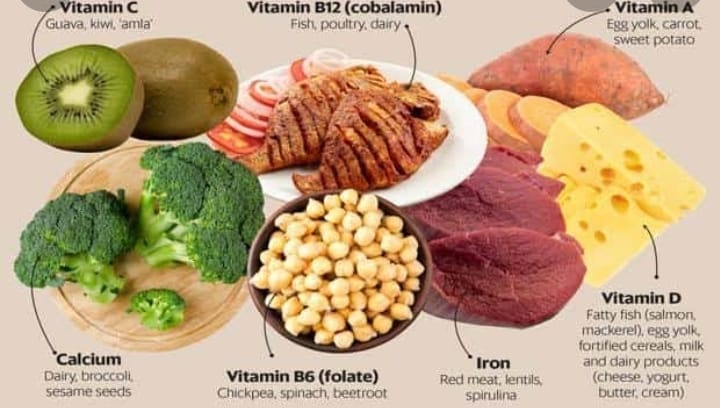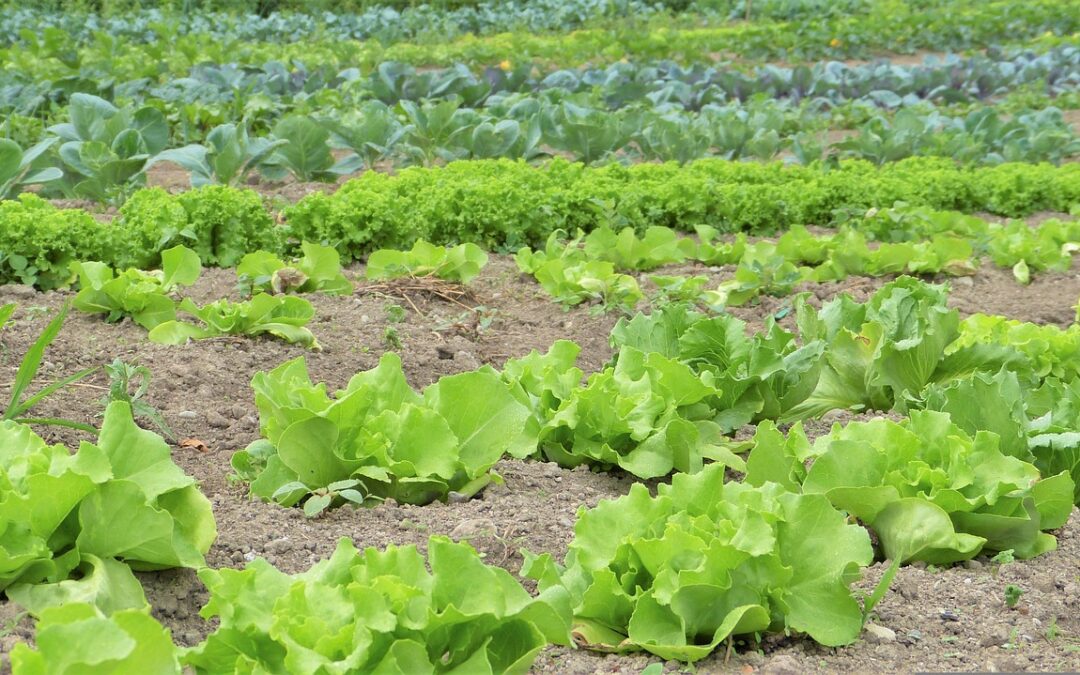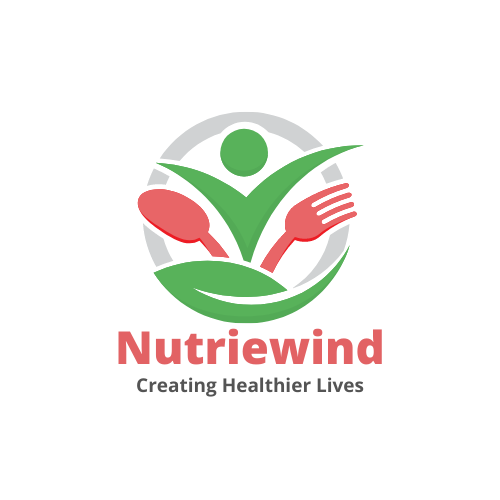
Nutrition
What is Skin Health
Skin health is a key element to how we feel and how others look at us. There are many elements to glowing skin, but below, I will pinpoint 7 foods that are important for the health of your skin.
CAUSES
Asteatotis, xerosis, follicular hyperkeratosis, carotenoderma, hyperpigmentation, acne, pruritus,and facial dermatitis etc…
SYMPTOMS
Chapped lips, itchy skin, dried skin, puffy face, sores, acne, allergy etc.
Eating disorders can be a serious threat to your health. Becoming overly fixated on your appearance and/or having a negative body image can lead some people to severely restrict how much they eat or binge and then purge. Society might make you think that beauty is all-important, but the truth is that how you look on the outside is only one small part of what makes you beautiful.
Body Image
Body image is how you see yourself and how attractive you feel. Society places a lot of importance on how a person looks, from a person’s body shape to their facial features, hair, or skin tone. Striving to reach an unattainable standard of beauty and not conforming to societal norms can cause you to feel uncomfortable and embarrassed about your body, which can cause distress. If the distress is serious enough, it can even lead to emotional and physical health problems. Ideally, you should accept your body as it is, knowing that no one is perfect. If your body isn’t exactly the way you want, make efforts to start healthy habits. But never shame yourself or be overly harsh with yourself about your body and its appearance.
Many people with anorexia also deal with acne. Read about the relationship between anorexia and skin problems, like acne.
Anorexia nervosa is an eating disorder that can produce several health problems, including acne.
Acne is a skin condition that occurs when oily secretions in the skin plug the openings of hair follicles. It produces red, bumpy lesions on the skin. According to the U.S. National Library of Medicine, acne can occur in people of all ages but is most common among teenagers.
Many people who experience anorexia also develop acne. The website for Eating Disorder Hope includes a testimonial from a woman in recovery from anorexia who also dealt with acne problems at the height of her anorexia. Acne can exacerbate self-image problems in people with anorexia. In some cases, acne can worsen eating disorders and cause depressive symptoms
Acne During Anorexia Nervosa
The restrictive behaviors of anorexia nervosa lead to severe malnourishment, which impacts the functioning of all organ systems of the body. The body, stripped of appropriate vitamins and nutrients, often attempts to use its current stores to find these which can lead to alterations in how all systems function. For example, one study noted that “hepatic, renal and thyroid functioning problems related to anorexia can…bring about pruritus, which is severe itching of the skin ” This severe itching of the skin can lead to increased scratching and touching, resulting in oil deposits into pores.
The skin also dries due to anorexia nervosa behaviors. When this occurs, the body sends more oil deposits to lubricate the skin, which may lead to pore clogging.
DIETARY MANAGEMENT
Essential nutrients for healthy skin are vitamin-A, vitamin C, Vitamin-E, Omega-3 fatty acids, selenium, collagen, Zinc, and copper.
Lifestyle management tips for healthy skin include the following:-
- Hydration
- Consuming low glycemic index foods
- Avoiding inflammatory foods
- Managing gut health
- Exercise
- Good sleep
Nutrition is important for health. An unhealthy diet can damage your metabolism, cause weight gain, and even damage organs, such as your heart and liver.
But what you eat also affects another organ — your skin.
As scientists learn more about diet and the body, it’s increasingly clear that what you eat can significantly affect the health and aging of your skin.
FEW SOURCES OF GOOD SKIN HEALTH
Fatty fish, Avocados, Walnuts, Sunflower seeds
Sweet potatoes, Red or yellow bell pepper, Broccoli, Tomatoes…..etc
Healthy Food Healthy Skin
We are eating a healthy, well-balanced diet, and having healthy-looking skin goes hand in hand. While there is not a ton of proof that certain foods can be harmful to your skin, what we absolutely know is that a diet rich in antioxidants, vitamins, and healthy fats can have considerable benefits to young and aging skin.
There are different categories to break down your foods to make sure you are getting the proper nutrients daily and healthy glowing skin.
There are so many antioxidant-rich fruits and vegetables that can fall into this category. Think the darker and brighter the fruit or vegetable is, the richer in vitamins and antioxidants.
Vitamin C-rich foods are known to boost collagen levels in the skin: citrus fruits, kale broccoli, and bell peppers
Drink water! Staying hydrated is another big component of what we take in and how it affects our bodies. Staying hydrated is key to healthy skin and overall health.
There are also supplements and even spices to add to food if these foods are not in your daily diet.
Eating a well-balanced diet is only part of what needs to be done to obtain optimal health and great-looking skin, but it is an important piece!
TIPS FOR HEALTHY SKIN:-
Wash up. Bathe in warm—not hot—water; use mild cleansers that don’t irritate, and wash
gently—don’t scrub.
Block sun damage. Avoid intense sun exposure, use sunscreen, and wear protective clothing.
Don’t use tanning beds or sunlamps. They emit the same harmful UV radiation as the sun.
Avoid dry skin. Drink plenty of water, and use gentle moisturizers, lotions, or creams.
Reduce stress. Stress can harm your skin and other body systems.
Get enough sleep. Experts recommend about 9 hours a night for teens and 7-8 hours for adults.
Speak up. Talk to your doctor if you notice any odd changes to your skin, like a rash or mole that changes size or color.
Using sunscreen on a daily basis. Sun exposure causes the most damage to our skin. As well as successfully protect our skin from harsh UV rays, preventing blemishes and hyperpigmentation in the future, sunscreen is crucial in preventing skin cancers.
Maintain a skincare routine. Try to follow a simple skincare routine every day, both day and night, to clean the skin e.g. face wash, toner, and moisturizer. The steps will be the same for both day and night, except in the daytime it should include sunscreen. Avoid using harsh products.
Avoid smoking. Smoking can cause wrinkles and quicken the aging process.
Follow a healthy diet. No matter how much you take care of your skin from the outside, if the things you are consuming are not good, it will reflect through your skin. Drink a lot of water and eat lots of fruits and vegetables.
Stress management. Stress can trigger many skin problems, as it disturbs the hormones resulting in pimples.
Adequate sleep. Proper sleep is an essential part of skincare, although it is often neglected. Lack of sleep can lead to dull skin and dark circles.
See a dermatologist. If you want to take advanced care of your skin or you are suffering from skin problems, then you should seek help from a qualified professional such as a dermatologist.

Nutrition
Macronutrients:
Macronutrients are the category of nutrients that are required in large amounts for the body.
Macronutrients are very much essential in an athletes day to day life as he/she will require more energy than any sedentary or moderate worker. Most energy should ideally come from carbohydrates as they constitute 4 calories per a gram of carbohydrate. On an average, an athlete should get 45-60% of his daily energy from his source of carbohydrates.
Protein is the most used and misunderstood term when it comes to athletic nutrition as there is this myth that an athlete should consume a lot of protein to gain muscle, to get strength and stay on field for the longest hours possible. As some of it could be true when it is said that protein builds muscle. But any protein if taken in larger amounts than its necessity could have adverse effects on an individual’s health. Ideally an active person like an athlete or any person who exercises regularly should consume around 1.5 to 2 grams of protein per kilo body weight depending upon the category of the activity. One gram of protein yields about 4 calories of energy. Excessive protein consumption would lead to bloating, confusion on field, upset stomach, vomiting sensation, bone mineral loss, dehydration and irritability. In the long term, even kidney disorders would arise.
Healthy sources of macronutrients for a sports person are:
Carbohydrates:
- Bananas
- potato/ sweet potato
- Oats
- Quinoa
- lentils
- Whole grains
- Brown rice
- Vegetables
- Fruits
- Whole bread
Protein:
- Eggs
- tofu/paneer
- chickpea/hummus
- Chia seeds
- Milk
- Chicken
Nuts:
- fish
- Whey protein
- Beef
- quinoa Nuts
- Seeds
- Greek yogurt
- Nut butter
- Avocado
- Salmon, tuna
- Flaxseeds
- Eggs
- olives
Micronutrients:
Micronutrients are the category of nutrients that are required in small amounts for the body.
Micronutrients constitute vitamins and minerals that are important for boosting immunity, disease prevention and overall well being. Though it is said that the body requires them in smaller amounts, it is always important to meet up to their RDA as their deficiency could lead to certain health disorders.
Though every vitamin and mineral has their own significance in the body, there are few micronutrients that are mandatorily necessary for a healthy body functioning.
They are:
Vitamin A: It is very important for athletes, because proper vision is the prime essentiality for any athlete. Also, it is a potent antioxidant which helps in removing oxidative stress and thus supports bone health.
Vitamin B complex: B1, B2, B6 produce energy required for metabolism while B12, is required for new cell synthesis.
Vitamin C: It is a powerful antioxidant source that helps an athlete to overcome inflammation, reduces oxidative stress and slows down cell damaging processes in the body.
Vitamin D: It aids in growth and maintenance of bones by processing calcium, synthesizing protein inside the body, and improves immunity.
Iron: It is so vital because it transports oxygen, helps in energy metabolism and prevents anemia.
Calcium: prevents stress fractures, helps muscles contract correctly, stabilizes blood pressure, strengthens bones and maintains brain function.
Phosphorus: It aids in delivering oxygen to the muscle, neutralizes acids and maintains the health of bones and muscles.
Zinc: It keeps up bone mineral density, helps in forming collagen tissue and is vital in healing wounds.
Potassium: maintains fluid, electrolyte balance that keeps an athlete hydrate and recover.
Magnesium: It helps in metabolism of carbohydrates, protein and fat. Helps in proper muscle function, neurotransmission which is very much necessary for athletes.
Some of the food sources for the following micronutrients :
Vitamin A: Carrots, papaya, mango, apricot, capsicum, milk, sweet potato, avocado, liver, leafy greens, tomatoes etc
Vitamin B complex: Whole grains, poultry, eggs, dairy, legumes, breakfast cereals, sea food
Vitamin C: Bell peppers, strawberry, kiwi, lemon, oranges, guava, papaya, pineapple, cauliflower, cabbage, grapefruit, tomato, white potatoes, broccoli, brussels sprouts
Vitamin D: Egg yolk, salmon, liver, fortified milk, yogurt, soy milk, oily fish, fortified orange juice, tofu, oyster, mushroom.
Iron: Raisins, dry fruits, kidney beans, peas, fish, cashew, quinoa, chicken, leafy greens, pumpkin seeds, liver, dark chocolate, eggs, chickpeas, beef, spinach, tofu, lentils, broccoli.
Calcium: Milk, yogurt, almonds, tofu, paneer, leafy greens, cheese, soy milk, beans, spinach, salmon, sesame seeds, skim milk, chia seeds, figs, soybeans, raspberries.
Phosphorus: Kidney beans, shellfish, poultry, sardine, peanuts, sunflower seeds, potatoes, beans, whole grains, dairy products, tofu, egg, lentils,chicken breast
Zinc: Pumpkin seeds, cashews, almonds, meat, dark chocolate, chickpea, shellfish, whole grains, chicken, beef, oats, crab, sesame, milk, beans and lentils
Potassium: Banana, avocado, sweet potato, spinach, beans, yogurt, raisins, dried apricots, beetroot, leafy greens, watermelon, broccoli, tomato, salmon, beet greens, prunes
Magnesium: Banana, spinach, beans, tofu, cashews, whole grains, brown rice, seeds, legumes, edamame, peanuts, salmon, kidney beans, black beans, quinoa, cashews, mustard greens.

Nutrition
PCOD (Polycystic Ovarian Disease) is mostly caused by a combination of hormonal imbalance and genetic tendencies. For someone with this, the ovaries will often release either immature or only partially mature eggs, which can go on to develop into cysts. Whereas in a normal menstrual cycle the ovaries release mature eggs alternatively each month which are ready to be fertilized.
Symptoms of PCOD:
- Irregular or unpredictable menstrual periods
- Heavy bleeding during periods
- Excess body hair
- Acne
- Hair loss or male pattern baldness
- Difficulty in getting pregnant
- Obesity
- Acanthosis nigricans is a condition of dark skin patches around the neck, underarms, and inner thighs.
- Sleep disorders
- Depression
There are several combinations of medicines available to combat the symptoms of this. Change in diet: A healthy diet for women suffering from this helps wonders in the treatment of PCOD. Diet enriched with proteins and healthy fats help to maintain a healthy menstrual cycle and improves skin-related issues.
Exercise and yoga :
Exercise helps women suffering from PCOD decrease their weight. As the major symptom of PCOD is obesity, therefore maintaining the ideal weight for women is very important. Daily 10,000 steps of walking help to maintain the metabolism and menstruation.
Women dealing with pods also suffer from mental health issues. It’s very essential to keep their mental health in check. Yoga helps in the release of endorphins, hormones responsible for reducing stress and elevating mood.
PCOD is a disorder that has become very common nowadays in women because of their sedentary lifestyle and adulteration of food products. It can’t be cured completely but its symptoms can be treated by treating the root cause with proper diet and medications.

Diet Plans, Nutrition, Nutritionist Consultation
Oncology Nutrition-
Cancer is considered to be one of the leading causes of morbidity and mortality worldwide. According to WHO, the number of new cancer cases is expected to rise by about 70% over the next 20 years so oncology nutrition is the base to fight against this war.
Cancer is a life-threatening disease that is caused by abnormal cell division and the reproduction of cells which then spreads to the other body parts. The development of cancer is a multistep process that occurs in three stages: initiation, promotion, and progression. Cancer requires a high level of treatment with high-radiation devices, strong medicines, and countless doctor visits with surgery, chemotherapy, cytotoxic, radiation, immunotherapy, and hormonal treatments. While undergoing treatment, most cancer patients suffer gastrointestinal troubles. It affects the patient’s diet as well, which calls for a high-calorie modifier diet and, in some cases, specialized feeding approaches like TPN as well. When you have cancer, your body needs proper nutrients and calories to recover from treatment. Yet, eating well can be difficult when you feel nauseous, weak, or don’t have the energy to cook. That’s where an oncology dietitian comes in.
An oncology dietitian works with cancer patients and their families to develop a diet during radiation.
Good nutrition is important for cancer patients. Maintenance or improvement in nutrition status is the key goal of medical nutrition therapy for individuals undergoing treatment for cancer. This medical professional helps patients to adjust their nutritional intake and optimize health and minimize side effects caused by cancer and cancer treatments.
Common sites of cancer –
The most common sites of cancer among Indian men are lung, colon, rectum, stomach, head and neck and liver. The most common sites of cancer among Indian women are the breast, ovary, lip and oral cavity, lung, and cervix.
Causes of cancer –
A number of exogenous factors are known to cause cancer, including the following:
- Tobacco use
- Infectious agents (e.g., bacteria, parasites, viruses)
- Medication
- Radiation
- Chemical exposure (e.g., polychlorinated biphenyls, organic compounds used in plastics, paints, adhesives)
- Carcinogenic components found in foods and beverages (e.g., aflatoxins, heterocyclic amines, polycyclic aromatic hydrocarbons, N-nitroso compounds)
Endogenous causes of cancer include inherited germ-line mutations, oxidative stress, inflammation and hormones.
Although all patients with cancer are at nutritional risk, not all patients with cancer become malnourished. Therefore, nutrition screening and the nutrition care process including oncology nutrition assessments, ongoing monitoring, and follow-up are crucial for preventing or minimizing the development of malnutrition at all stages of treatment. Treatment procedures, as well as psychological impact, can cause weight loss and also anorexia in some cases. Protein-energy malnutrition is a common case that affects the advanced stage of cancer. Weakness altered basal metabolic rate, as well as abnormalities in the fluid and energy metabolism also start to surface when the stages advance. Carbohydrates, lipid metabolism, and protein are all altered by tumor growth. With changes happening in the body, it is highly likely that you lose your appetite.
Few points which explain the importance of nutritional treatment in cancer-
- Achieve and maintain a healthy body weight
- Prevent or reduce nutrient deficiencies
- Prevent lean body mass and maintain strength and energy
- Improve tolerance to treatment
- Reduce the risk of cancer reoccurrence
- Minimize the effect of nutrition-related side effects and complications
- Maximize quality of life
- Be physically active
How a oncology dietician can help Cancer patient?
When you consult an oncology Dietician through NUTRIEWIND, you improve your chances of fighting cancer and fast recovery. Optimal nutrition and a tailored/ balanced/ high calorie diet that matches your specific health condition have several benefits:
- It decreases the chances of infection.
- It helps increasing appetite.
- Improves immune function of the body.
- Deals with many routine side effects like fatigue, feeling hungrier than usual, constipation, alteration in taste, Diarrhea, not feeling hungry, etc.
- Maintain the daily nutrition requirements of body.
- Maintain body weight and improve mental health.
- Helps rebuild the body tissues.
- Improves the overall strength of the body and also increases energy.
- Motivates patients to deal with the deadliest disease.
To meet these benefits Oncology dietitian would monitor the nutritional status and also suggest you diet modifications from time to time for a diet that is high in protein and calorie with optimum vitamins, minerals and antioxidants intake according to the general recommendation. It is during this time that your body requires more fuel than the normal to repair the effects of cancer treatments. It has been affirmed by National Cancer Institute, about one-third of the deaths in case of cancer are related to malnutrition. Hence, it is essential that you provide your body the much-needed dose of nutrients that helps fuel the healing process.
NUTRIEWIND can help you maintain a healthy diet enriched with healthful foods that offers nourishment and also helps to maintain a balanced diet. The vision to help people lead a healthy and disease-free life has been the motive behind various fitness programs carried out by us. If you are looking for a reliable, trusted and experienced cancer nutritionist/ dietitian, then consult NUTRIEWIND, today!

Nutrition
What is organic Farming?
Organic farming is a type of sustainable agriculture. It has the goal of farming without the use of chemical fertilizers and pesticides. Organic farming is also different from traditional methods in that it encourages biodiversity, rotating crops, and uses no genetically modified organisms. A brief introduction to the benefits, types, methods, advantages, and disadvantages of organic/eco/biological farming is detailed below.
This industry has been overgrown in recent years, as consumers are becoming more aware of the effects of pesticides on their health and the environment. Not only human organic food production can also be better for animals and wildlife.
Benefits of Organic Farming
It offers many benefits to society. It has been shown to positively affect soil quality and biodiversity, Human health is also affected. It’s found all over the world. They are trendy in Europe and North America. In these regions, organic food is more popular than conventional food.
However, it may not be suitable for all climates or locations because it requires more labor-intensive technology than other farming types, such as crop rotation and natural pest control mechanisms like companion planting or insect traps.
Types of Organic Farming
There are various types, which include –
Organic crop farming: This type of farming has grown fruits, vegetables, coffee, tea, cotton, and more by following organic principles.
Organic livestock: In this method includes raising cows, pigs, chickens, buffalos, and other animals without using any artificial chemicals or genetically modified organisms in order to produce meat and dairy products.
Organic aquaculture: This farming involves raising fish or shrimp in an environment. this does not include any artificial chemicals or genetically modified organisms.
Advantages of Organic Farming
Organic foods are free of dangerous pesticides and antibiotics. Recycles animal wastes back into the farm. Environment-friendly organic products are more nutritional, tasty, and good for health.
- Environment-friendly.
- Promotes sustainable development.
- Healthy and tasty food.
- Inexpensive process.
- It uses organic inputs.
- Generates income through exports.
- Source of employment.
- It is more labor-intensive.
- Hence, it generates more employment.
Disadvantages of Organic Farming
Methods of organic farming
The principal methods of It include crop rotation, green manures and compost, and biological pest control.
Crop Rotation –
Crop rotation is complete when we will growing a series of different types of crops. they are in the same field across a sequence of growing seasons and climates.
Green Manure and compost –
Mixing green plants with the soil enriches organic matter and nitrogen in particular. It also improves soil quality. Its moisture levels and nutrients improve for microorganisms. The described method of agriculture also reduces weed infestation.
Biological pest control
There are many ways biological pest control can be used in an environment. One way is to introduce the predators of the pests into the atmosphere. For example, ladybugs eat aphids which are a type of pest that people find on plants. Another way to use biological pest control is by introducing parasitic wasps into an environment because they lay their eggs inside of other insects which causes them to die and prevents them from breeding.
Conclusion
Organic farming gives more nutritious and safe food. It is popular for growing organic foods. that is thought to have become healthier and safer. Perhaps ensures food safety from farm to plate. This process is more eco-friendly than conventional farming. Our government should increase awareness of biological farming.





